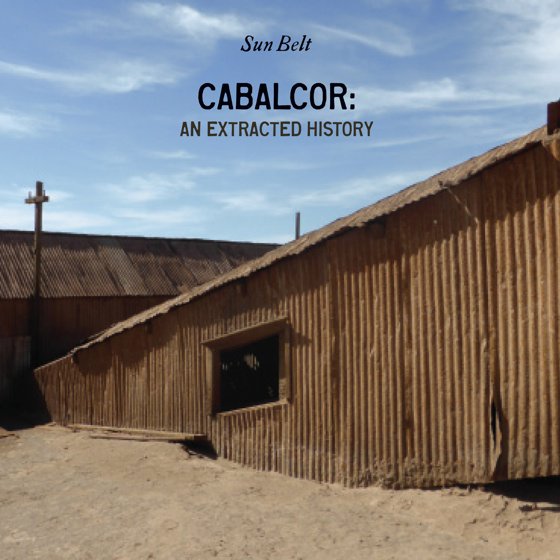The relationship between activism and spoken word has a long, storied history in Canada. From Michèle Lalonde’s 1968 Speak White, performed during the rise of separatism in Quebec to Ojibwe First Nation’s Duke Redbird’s spoken word performances about anti-aboriginal racism to Nanaimo’s Shane Koyczan’s recent anti-bullying performance poetry.
Vancouver-based multimedia group Sun Belt — consisting of Rick Maddocks, Stephen Lyons, Paul Rigby, Jon Wood, Terri Upton, Tyson Naylor and Russell Sholberg — isn’t necessarily spoken word; however, it is a tight fit as it relates to how the group is handling production and their debut publication Cabalcor: An Extracted History, a “genre-defying” story of an imaginary tar sands company town.
Sun Belt’s Cabalcor is reminiscent of Canada’s small press scene in the late 1990s into the early 2000s when publishers and performers produced literary crossover projects such as Ian Ferrier’s Exploding Head Man, Impure (An Oral History of Spoken Word in Canada) and Broken Pencil and Wired on Words released the CD Spoken Broken.
The fictional albeit reality-inspired history of a dry, tar sands company ghost town in an unidentified part of North America in Cabalcor is portrayed through found artwork, photographs, invented sources (journals, environmental studies) and music. The poems chronicle moments of hope and despair in the region of this fictional documentary.
In an interview with BeatRoute Magazine, Lyons said the town’s location is intentionally a mystery. “We left the time and place intentionally unstated. It could be past/present/future, it could be one of a variety of regions.”
And the subject is incredibly timely, in terms of activism, as Sun Belt’s project examines the ramifications of tar sands just as Greenpeace recently published a statement demanding the Canadian government stop such acts and “end the industrialization of a vast area of Indigenous territories, forests and wetlands in northern Alberta” and thousands of activists in Canada continue to protest the expansion of numerous pipelines.
The music component (a downloadable 10-track album) was recorded in Tucson, Arizona and one gets the sense that this environment infused itself into the nuts and bolts of the final product.
As music critic Mackenzie Herd wrote recently of the album in Exclaim! magazine, the project was “a compelling texture of Latin flavour and country twang that could only be achieved in the Tex-Mex melting pot of the south-western United States,” suggesting the sound’s authenticity had to do with the environment in which it was created, and to a degree inspired.
Found material, (such as old journal entries, advertisements, photos) are a usual suspect or tool in contemporary poetry and these items make their way into the book but with a significant twist — they’re made up. After all, the town, its population and those who voice said population are completely fictional.
Yet despite this decisive ingredient in Cabalcor, the effect the evocation of a people’s history is not lost. “Today we listened to strange songs by church people,” Mervyn H., writes in his journal, a grade six student at St. Honris school, “and learned about this long-ago city in Asia.”
Adding to the multimedia spirit in the collection are excerpted screenplays, interviews, photos and paintings all tailgating their way towards a deeper message beyond the mirage-like quest readers may face trying to identify the location of Cabalcor.
The message is clear: let’s examine the way we have, as a society, used and abandoned, developed, migrated and toiled in any given area, only to watch it dissipate over time.
Serious poetry readers, i.e., other poets, teachers, booksellers and poetry fans, may be divisive on Cabalcor‘s rich invention since most contemporary collections lean on a philosopher, sect of civilization, time period and historical data to riff off of and drive their points home.
Yet Cabalcor wouldn’t exist without an inherent interest in social issues such as the environment and looking back on historical patterns to map the future, so perhaps those in doubt will be placated and assured of the project’s base for integrity.
I attended a recent launch party for Cabalcor where multi-voiced readings, music, images and dramatic monologues peppered the set. Performance has absolutely been key for Sun Belt during the release of Cabalcor. Through the spirit of poetry, the allure of music and the mystery of everything in between, Sun Belt has put together a revised theory to the ever-curious world of spoken word.
Nathaniel G. Moore lives somewhere on Vancouver Island. He is working on a new novel called Quanticum Beach and his next book Jettison is forthcoming.



